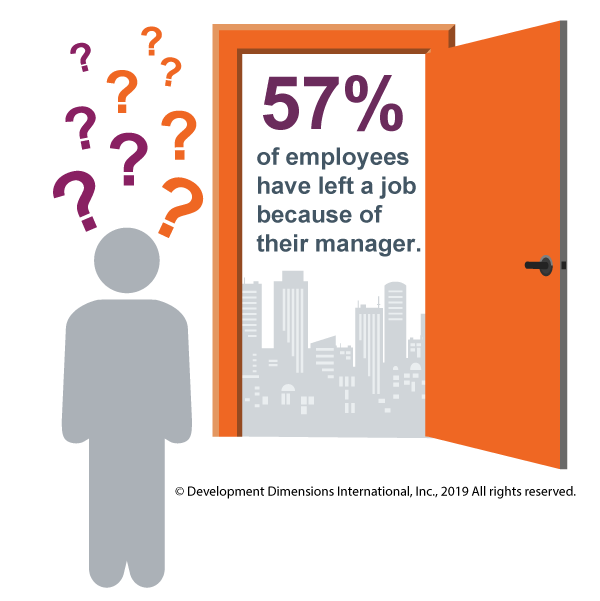Leaders at all levels need feedback to be their best. And according to DDI’s Global Leadership Forecast 2021 research, many leaders want more feedback than they’re currently getting. They want to know where their weaknesses are so they can improve. They want to know what’s working and if they’re a good leader. Annual feedback doesn’t cut it anymore. They want and need continuous feedback to be most effective, yet much of the feedback leaders receive is infrequent, delayed, and frankly not that helpful.
So how can L&D professionals help leaders get continuous feedback? In this blog, we’ll discuss best practices for implementing continuous feedback in your organization. But first, let’s define continuous feedback and its benefits, and how it’s different from one-time feedback for leaders.
What Is Continuous Feedback?
Continuous feedback means that leaders receive frequent information about their performance from their managers, colleagues, and team members on an ongoing basis. Continuous feedback can be used to check on key behaviors across a range of critical leadership moments, whether leaders are navigating a big change in their role or are specifically honing their conflict resolution skills for day-to-day operations. The ongoing and recurring nature of continuous feedback is the critical ingredient most often missing for leaders as they focus on changing old habits or making new ones.
The Benefits of Continuous Feedback for Leaders
When leaders receive ongoing feedback, we see numerous benefits:
1. Better Communication and Collaboration
We see better communication and collaboration between leaders and their managers, leaders and their colleagues, and leaders and their teams because everyone is more vulnerable when giving and receiving feedback. Vulnerability is key to creating an environment of psychological safety, where everyone feels safe to speak up with ideas and be their authentic selves.
In addition, a culture of ongoing feedback improves the coaching skills of everyone involved. Managers of leaders can have more discussions with their team members, which gives them more opportunities to get better at it. Then, leaders themselves can use this positive model for coaching conversations with their team members. And then team members have a positive model to use when coaching their peers.
2. More Flexibility and Agility
Because continuous feedback is always ongoing, leaders aren’t waiting for quarterly or annual performance reviews or perhaps a 360-feedback survey that happens once every few years to learn how they’re doing and how they can get better. Ongoing feedback allows leaders to be more flexible with their development and focus in real time on how they can improve. And because we’re living in changing times, adopting a continuous feedback model allows development priorities to shift as business and organizational priorities shift.

3. Higher Engagement
When leaders are getting continuous feedback and conversing more with their managers about their development, they’re more engaged in their roles and have better relationships with their managers. And how an employee feels about their manager has longstanding effects on retention. According to DDI’s Frontline Leader Project, 57% of employees have left a job because of their manager.
4. Ongoing Development
Because leaders are getting more feedback about their performance and having more frequent conversations about their development with managers, their leadership development effort is more impactful. Their development plans are visited more frequently, and they discuss their progress more often with their managers. Because they are receiving feedback over time, they can make more regular course corrections. Ultimately, this results in leaders who have a stronger sense of ownership to drive their own development and improve their skills quickly.
How Continuous Feedback Systems Differ from Episodic, One-Time Feedback
If you are hiking a new trail, you don't look at your map when you start, then put it away and not look at it again until you reach the end of the trail. You consult your map frequently to help you reach your destination.
One-time feedback is like looking at your map when you start and then never looking at it again. You risk getting lost, taking a less efficient route, and not planning for what’s ahead. While continuous feedback is keeping your map with you, making sure you're on target and that you're going to the right place, so you reach the summit.
That said, one-time feedback should complement continuous feedback. You don’t have to give up your 360 feedback tools when you move to a continuous feedback model. In fact, these approaches can co-exist quite nicely.
For example, formal, scheduled performance reviews or similar connection points throughout the year remain necessary and helpful for alignment and focus around development, but continuous feedback is necessary to provide leaders with the data they need to adjust their behavior. Plus, leaders will find milestone formal reviews easier within a continuous feedback culture. Why? Leaders will already have a pulse on how they’re doing before going into those more formal reviews. They’ll have recent feedback and goals fresh in their minds and (ideally) noted in their individual development plans.
4 Best Practices for Implementing Continuous Feedback
So how can you make it easy for your leaders to give and receive feedback more regularly? Here are four best practices.
1. Make it quick.
This goes for both leaders seeking feedback from others and how feedback is given. Leaders should proactively seek feedback from others yet focus on a small set of relevant and specific behaviors. It shouldn’t be a long list asking how they’re doing in every skill area they use on the job, just a few specific skills they are focused on developing today. Similarly, feedback providers need to have the skills and confidence to provide feedback effectively.
2. Make it timely.
Leaders should ask for feedback soon after the event (i.e., a presentation or team meeting). And leaders should, in turn, give feedback to their team and colleagues in the same manner—providing feedback as close as possible to the moment a behavior occurs.
3. Make sure it’s helpful and sincere.
While we all love positive feedback, it shouldn’t be the only type of feedback leaders seek or give. Everyone needs balanced feedback to understand where they have weaknesses and where their strengths can shine even more. If feedback sought or provided isn’t balanced, is it as helpful as it could be? Exploring balanced feedback can be uncomfortable for many, yet if we remember to remain sincere and empathetic, we can create a psychologically safe environment where both parties are able to be vulnerable.
4. Incorporate technology.
Last but not least, find a continuous feedback system or tool to use that’s simple to implement in your organization. Note that these systems are not traditional survey-based platforms, but are tools where technology drives the process for giving, receiving, and reviewing feedback. And mobile compatibility is key.
Continuous feedback systems make the process engaging for users, some using games or “swipes” to gather anonymous feedback. Many of these systems offer insights immediately to users like leaders, so they know where they are doing well and where they can get better. Most systems also provide group-level data to HR, compiled across all leaders who are using the system.

Continuous Feedback Improves Organizations
With these best practices, your organization will be well on its way to a culture of feedback. While creating a feedback culture is no easy feat, continuous feedback is essential to getting there.
As your organization journeys towards a continuous feedback culture, you’ll see benefits emerge. Your leaders and pipeline of future leaders will get better: according to DDI’s Global Leadership Forecast 2021, organizations that report their leaders practice continuous feedback and then receive feedback from their managers on key skills are 4.6X more likely to have high leader quality and bench strength compared to those that don’t.
What’s more is that when continuous feedback as a practice is normalized, everyone in an organization becomes used to giving it and receiving it. Your organization will become a place with lots of opportunities for development and employee growth—and one where everyone can feel open to learning and getting better. And continuous improvement and growth are key to success!
Watch our on-demand webinar to learn how to transform new skills into leadership habits.
Adam Taylor is a reformed child psychologist who found his place in industrial-organizational psychology and DDI. Based out of the Seattle area, Adam heads DDI’s Enterprise Client Success Practice and thrives supporting the implementation of multifaceted leadership programs for DDI's global partners. He’s excited that diversity and acceleration are more frequently being discussed in the workplace, and he truly believes that if we start earlier and use proven practices, we have the power to impact many and influence communities, all while driving the business.


